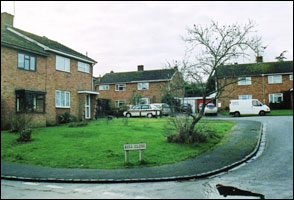|
At Drayton Parslow once flourished the most famous bell foundry in the land, founded by Richard Chandler. He was the son of Anthony Chandler, who came from Soulbury to work as the village blacksmith, and the earliest known bells date from 1636. When Richard died the business passed to his teenage son, Anthony, and so not until 1650 does it seem that the next bell was cast, that of the treble in Simpson church. That the enterprise continued to prosper is evidenced by at least one entry in the church registers; ‘Henry, son of Richard Chandler, bell founder, and Mary, his wife, baptised April ye 28, 1702.’ Yet mentions are also to be found in the records of the Quarter Sessions, with George, Richard and Thomas Chandler summoned in 1686 for ‘riot and assault’ on Richard Chandler senior. They were each fined £1, and perhaps regular ding dongs seemed an apt way of life for a bell founding family! The Chandler foundry continued until the later sons of the family felt disinclined to continue the interest, and, as master founder, it was taken over in 1726 by Edward Hall, who, by his marriage in 1741 to Mary, the daughter of Richard Chandler, returned a family connection to the foundry. Yet as the transport systems of the country began to improve, so the Drayton Parslow foundry faced increased competition, and the decline is evidenced by an entry in the burial register penned by the contemporary rector, Dr. John Lord; ‘Edward Hall poor old Bellfounder, Feb 9 1755.’ Possibly Edward’s son, William, tried to continue the business, but the smithy would be acquired from his son by John Baldwin who, as ‘a bedridden village worthy,’ recalled in later life how, whilst digging for clay, not only had pieces of bell metal been recovered, but also castings, moulds and a quantity of sand. However, no material evidence now remains, although the past fame of the foundry is echoed by the naming of Bell Close, which overlies the old bell founding site.
|




